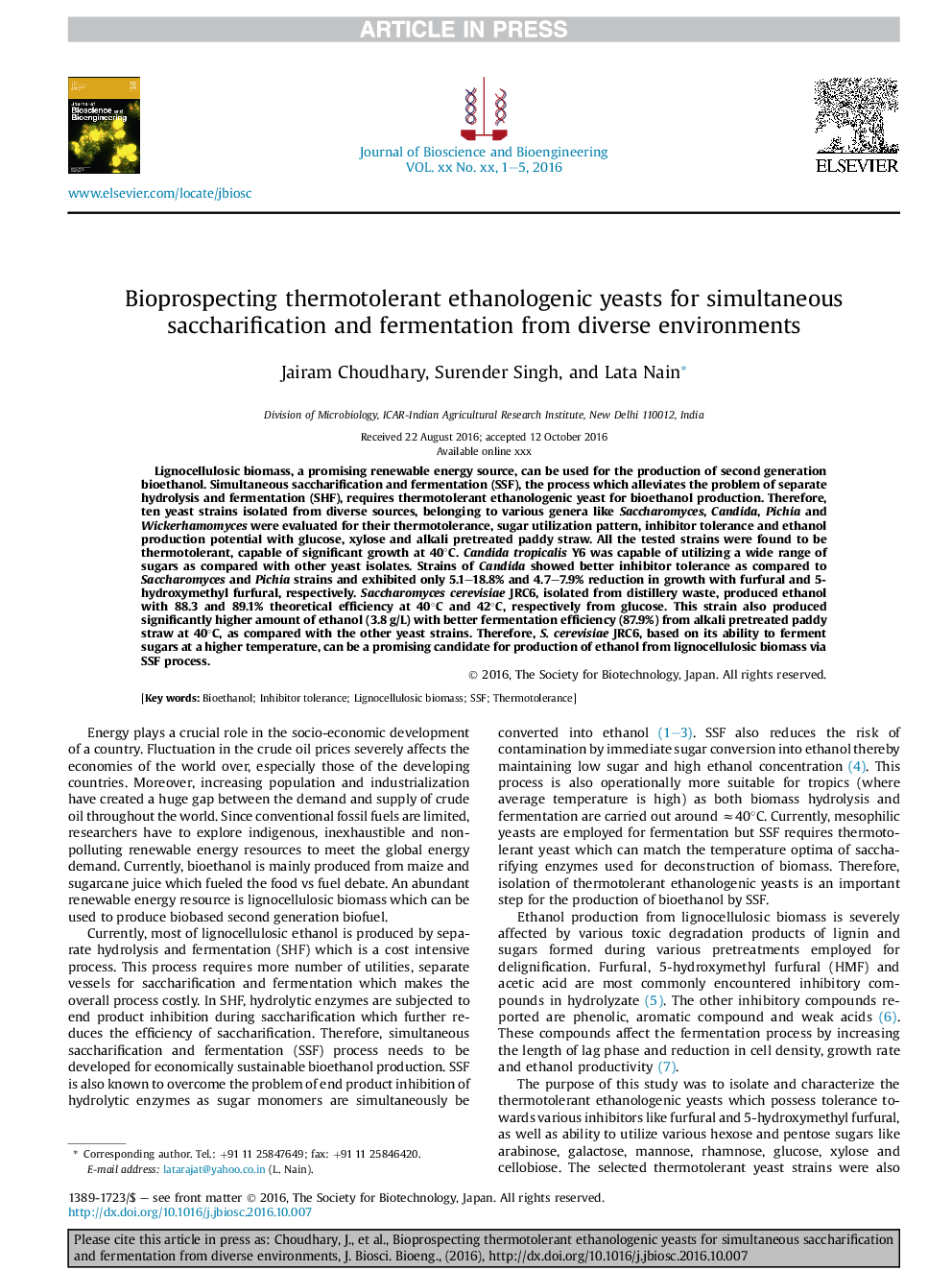| Article ID | Journal | Published Year | Pages | File Type |
|---|---|---|---|---|
| 4753409 | Journal of Bioscience and Bioengineering | 2017 | 5 Pages |
Abstract
Lignocellulosic biomass, a promising renewable energy source, can be used for the production of second generation bioethanol. Simultaneous saccharification and fermentation (SSF), the process which alleviates the problem of separate hydrolysis and fermentation (SHF), requires thermotolerant ethanologenic yeast for bioethanol production. Therefore, ten yeast strains isolated from diverse sources, belonging to various genera like Saccharomyces, Candida, Pichia and Wickerhamomyces were evaluated for their thermotolerance, sugar utilization pattern, inhibitor tolerance and ethanol production potential with glucose, xylose and alkali pretreated paddy straw. All the tested strains were found to be thermotolerant, capable of significant growth at 40°C. Candida tropicalis Y6 was capable of utilizing a wide range of sugars as compared with other yeast isolates. Strains of Candida showed better inhibitor tolerance as compared to Saccharomyces and Pichia strains and exhibited only 5.1-18.8% and 4.7-7.9% reduction in growth with furfural and 5-hydroxymethyl furfural, respectively. Saccharomyces cerevisiae JRC6, isolated from distillery waste, produced ethanol with 88.3% and 89.1% theoretical efficiency at 40°C and 42°C, respectively, from glucose. This strain also produced significantly higher amount of ethanol (3.8 g/L) with better fermentation efficiency (87.9%) from alkali pretreated paddy straw at 40°C, as compared with the other yeast strains. Therefore, S. cerevisiae JRC6, based on its ability to ferment sugars at a higher temperature, can be a promising candidate for production of ethanol from lignocellulosic biomass via SSF process.
Keywords
Related Topics
Physical Sciences and Engineering
Chemical Engineering
Bioengineering
Authors
Jairam Choudhary, Surender Singh, Lata Nain,
